
Heritage interior staircase, part 2
I wanted to figure out a way to make a straight, narrow staircase look interesting and perhaps a bit spooky. I first took a page from the Newport book and added laser cut corners to the side of the stairs. These are by Judy’s Create-a-House purchased from miniatures.com. The quality isn’t bad, though they were not as uniform in design and thickness as other laser cut trims I’ve used.
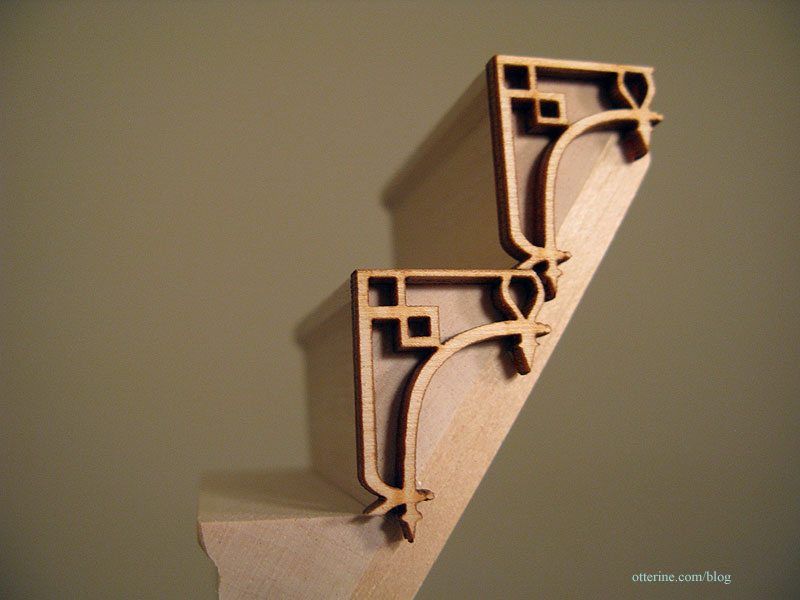
I had to remove portions of the pieces to get them to fit together uniformly along the side of the stairs.
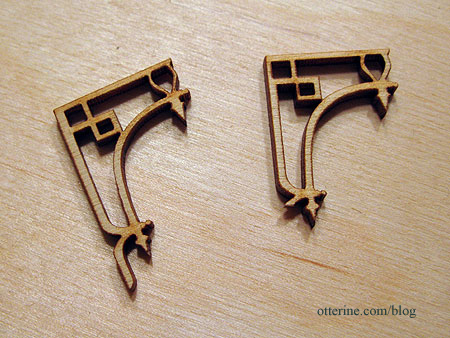
I think the result looks planned and natural.
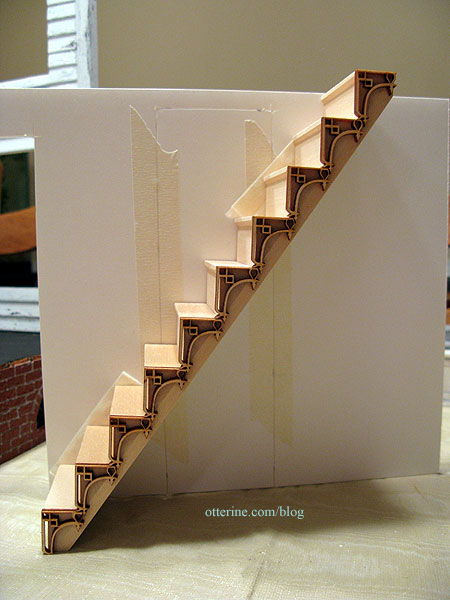
I started with a base coat of Barn Red by Americana on the risers and treads. This was mainly to keep any bare wood from showing through in the next step. It looks creepy already! Perhaps a bit too creepy. :D
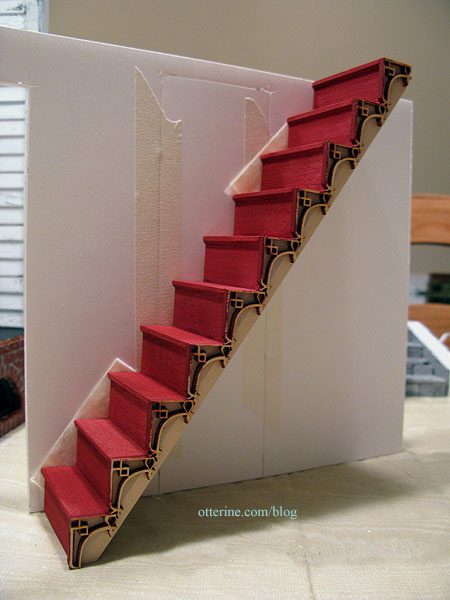
Since painting laser cut trims with a brush takes forever and I planned on making the whole thing black anyway, I taped the assembly to a board and sprayed it with Krylon flat black. Interestingly, flat black ended up satin black, so no added sealer was necessary.
This left only minor touch-ups in smaller areas of the laser cut pieces to do with a brush and regular acrylic paint. Much easier and faster with the sprayed based coat!
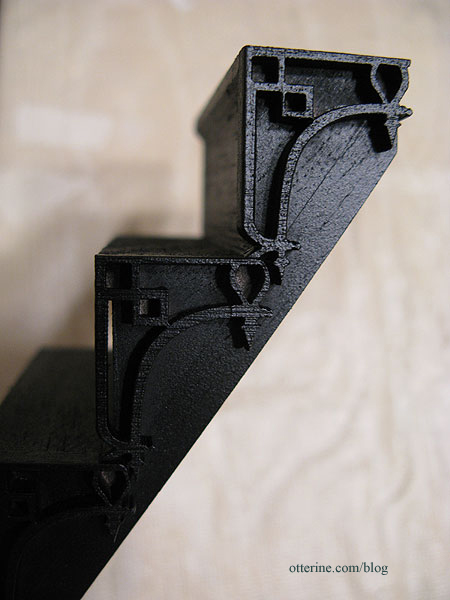
Here it is with Turquoise Gothic Stripe paper by The Paper Studio. I’ll use this paper in the foyer and upper hallway.
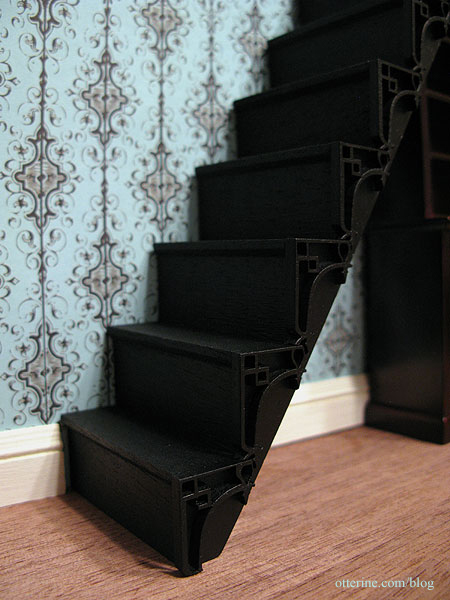
The area behind the stairs will be in the parlor and will be the deep glittery green paper by Recollections.
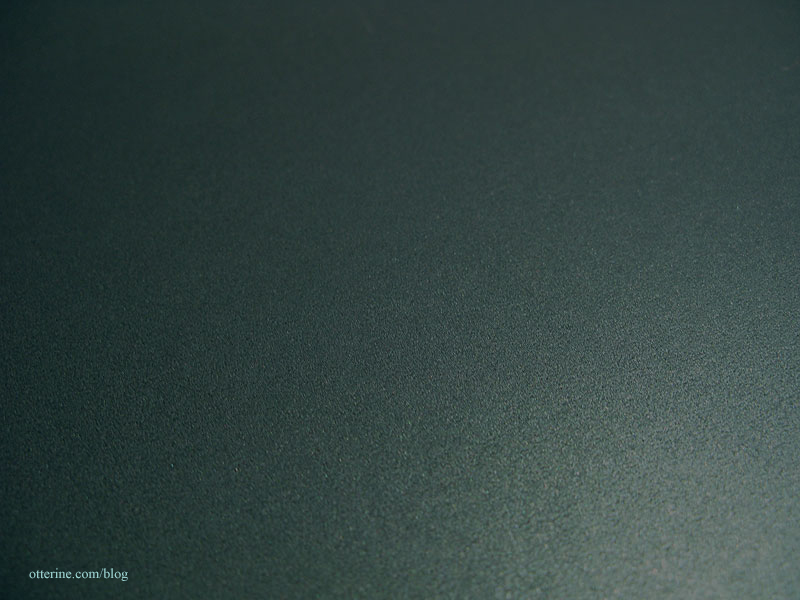
I wasn’t sure about having such dark stairs, but I think they’ll work wonderfully.
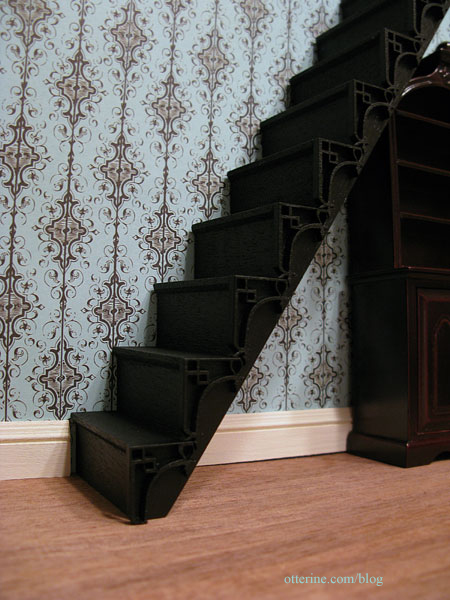
Categories: The Haunted Heritage
September 11, 2011 | 0 commentsFront door coach lamps
These are Clare Bell Brass Coach Lamps.
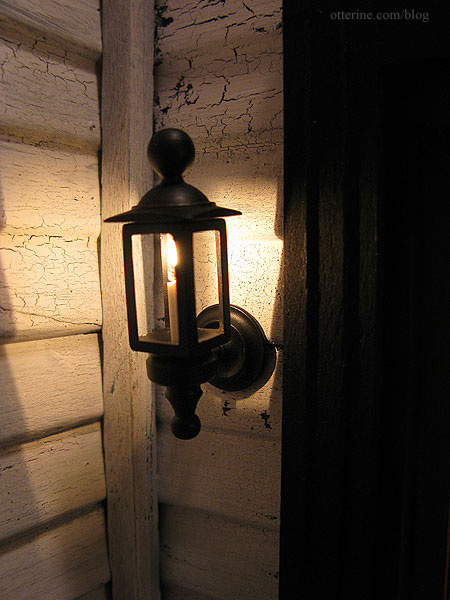
There’s nothing quite like adding light to a dollhouse to bring it to life!
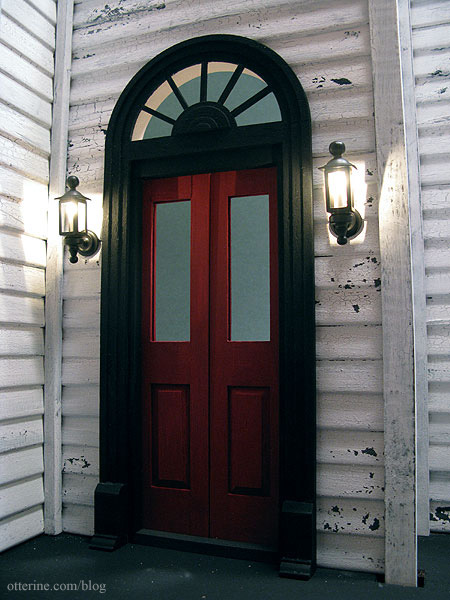
They are shiny and new and will need to be weathered, but they have a wonderful old time look about them.
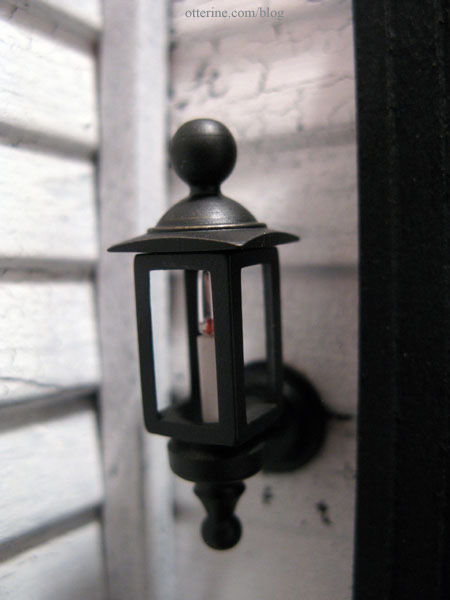
I need to get to work on the glass inserts for the front door to finish off the spooky mood! :O
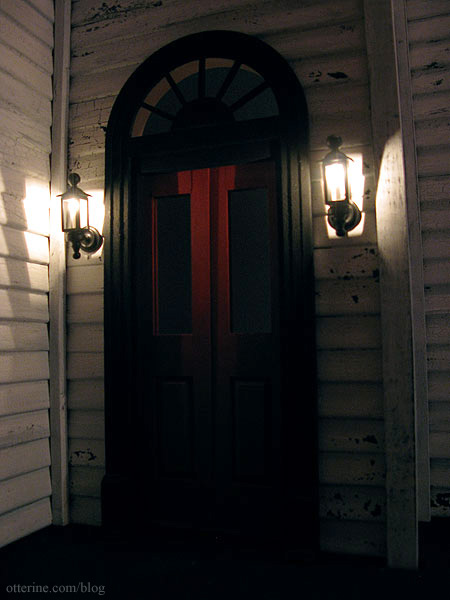
As I was trying to capture a detail shot of the coach lamps, the macro setting on the camera focused on the paint instead. I cannot believe how well the crackle paint effect mimics old, lifted paint – especially right below the light. It’s so exciting! :D
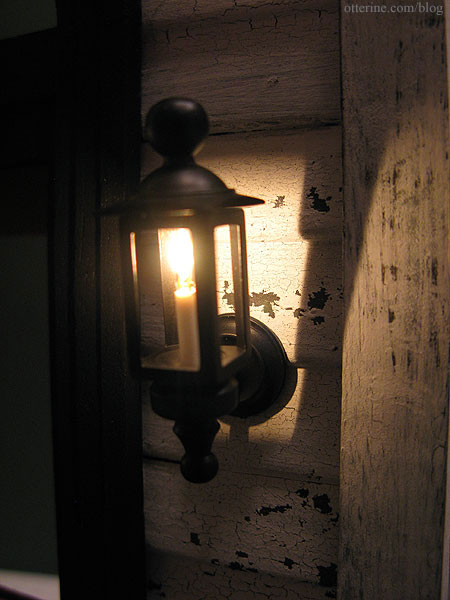
Categories: The Haunted Heritage
September 7, 2011 | 0 commentsMiniature Treasures: Catacombs Clock Case
I recently found my way to a blog on some of the most amazing miniatures I’ve ever seen. The artist uses old, sometimes ancient, pieces and creates wonderful works with such character. One of these works I instantly loved…his dark but beautiful debut miniature that he based on an old clock case and the French catacombs.
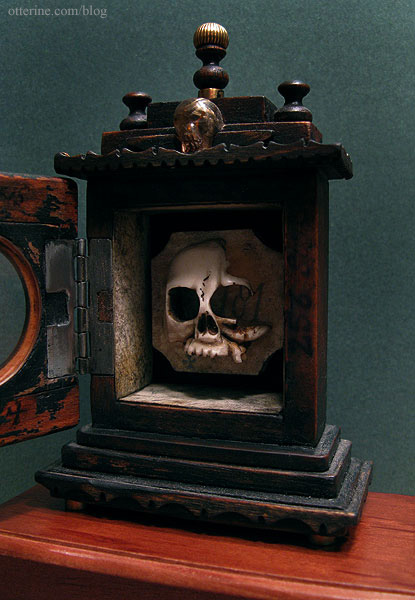
When Tony later posted on his blog that all of his works were for sale, I don’t think I could have sent that email to him any faster! :D He replied promptly, and after some email exchanges, all was set and that beautiful piece was on its way to me.
It soon arrived safe and sound. It’s just so gorgeous, so well made. I tell you – it even smells awesome!!!! :D It smells of wood and parchment and leather. The scent reminds me of ‘new car smell’ most of all.
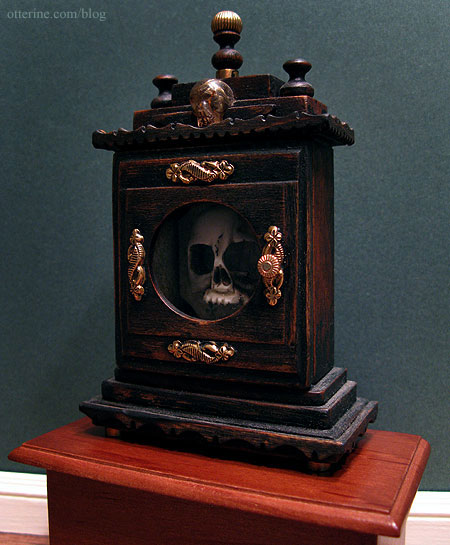
Tony used a skull carved from genuine bone, genuine 18th century vellum, optical glass from a pair of broken Victorian spectacles, a hand carved rutile quartz skull, and items from broken watches and clocks.
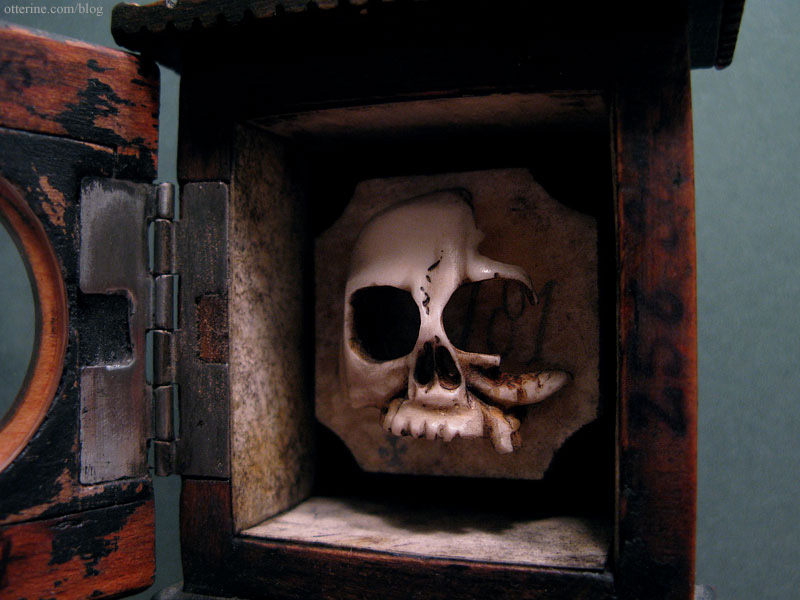
Thank you, thank you, thank you, Tony, for this beautiful work of art. I will indeed treasure it!
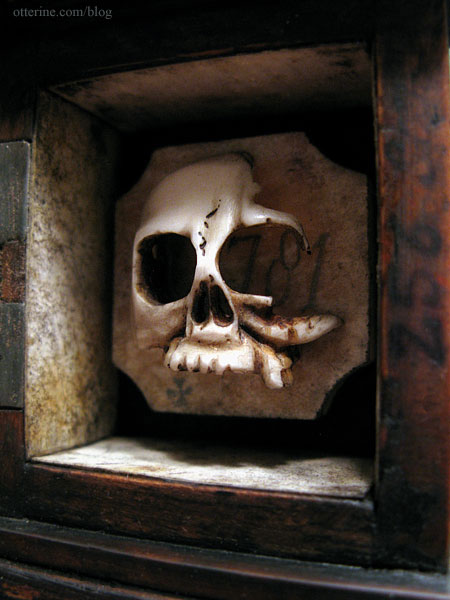
(As of 2024, his blog is no more, but you can find the artist here.)
Categories: Miniatures, The Haunted Heritage
September 6, 2011 | 0 commentsCellar windows and lighting
After painting the cellar windows black on the exterior and interior, I applied some paint washes in Bittersweet Chocolate and Terra Cotta, both by Americana. This gives the windows the look of rusted wrought iron.
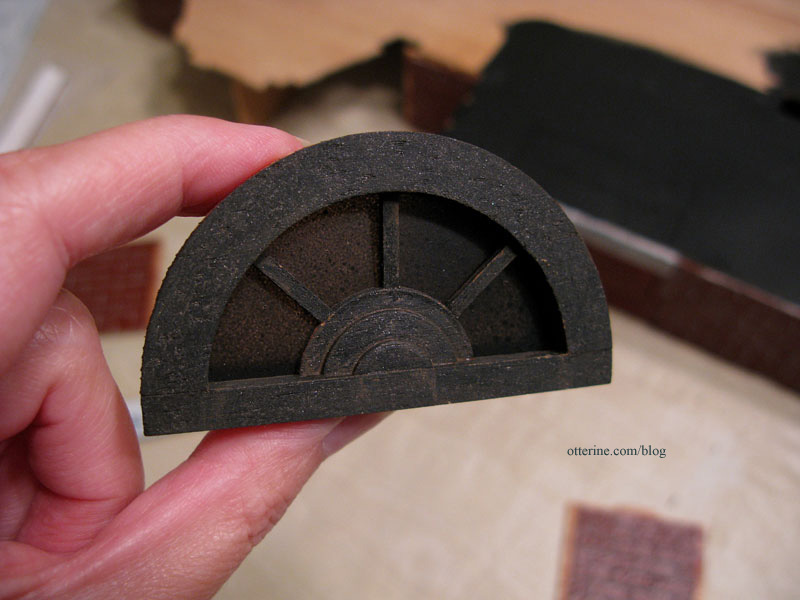
I added the windows previously spray painted lightly with flat black to give the appearance of years of accumulated dirt, holding them in place by gluing a spare wood piece behind the semicircle of the outer trim (so they won’t show from the outside). Once the foundation is attached to the base, I don’t want those windows budging one bit!
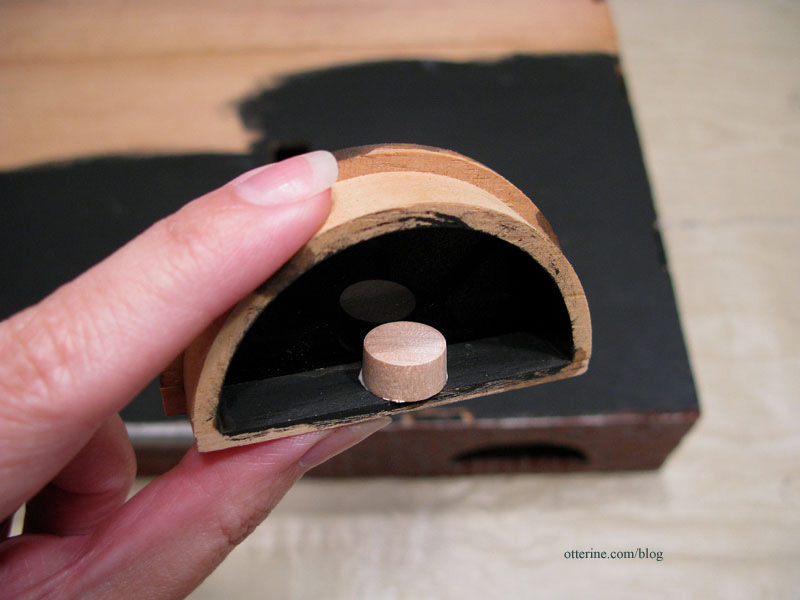
I then glued the windows inside the foundation.
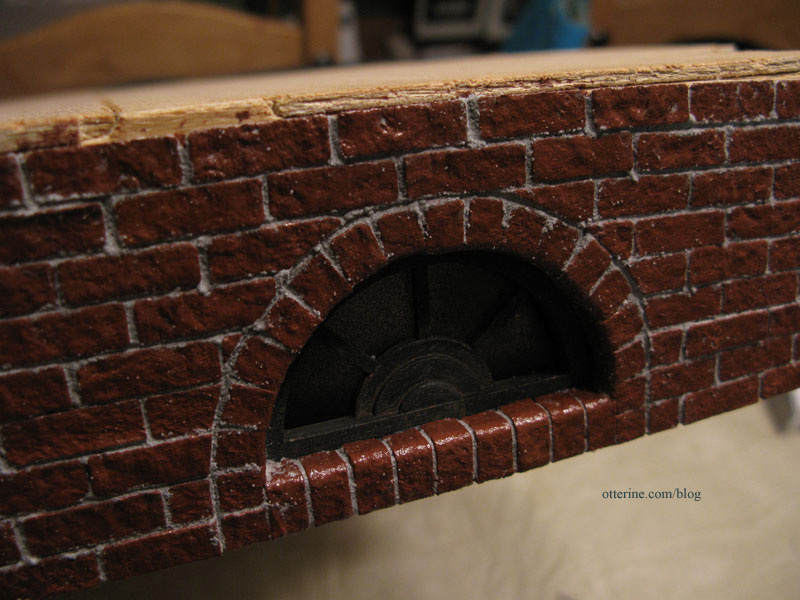
I used warm white 5mm LEDs from Evan Designs for the lighting. I like them since they have the look of a bare lightbulb. To give the LEDs the proper placement behind the windows, I bent the ends approximately 1.5″ from the tip of the bulb and secured them in place with duct tape to the foundation ceiling.
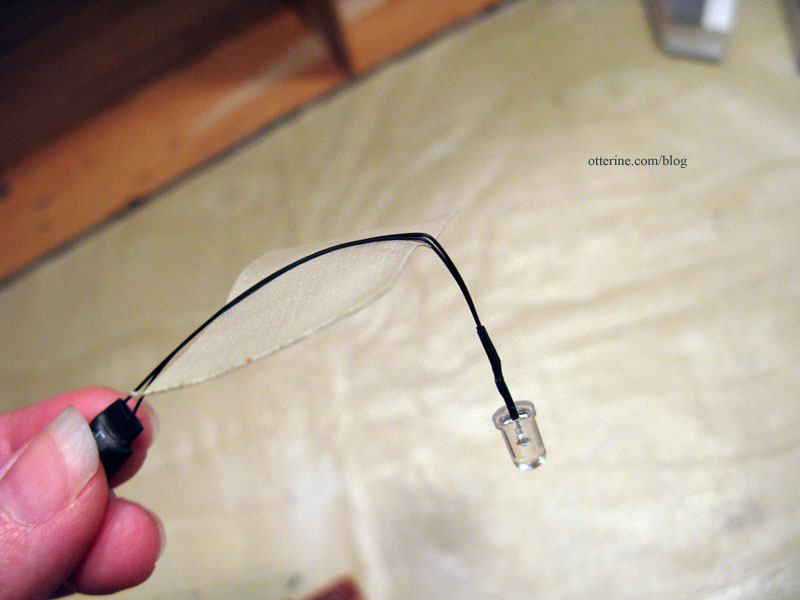
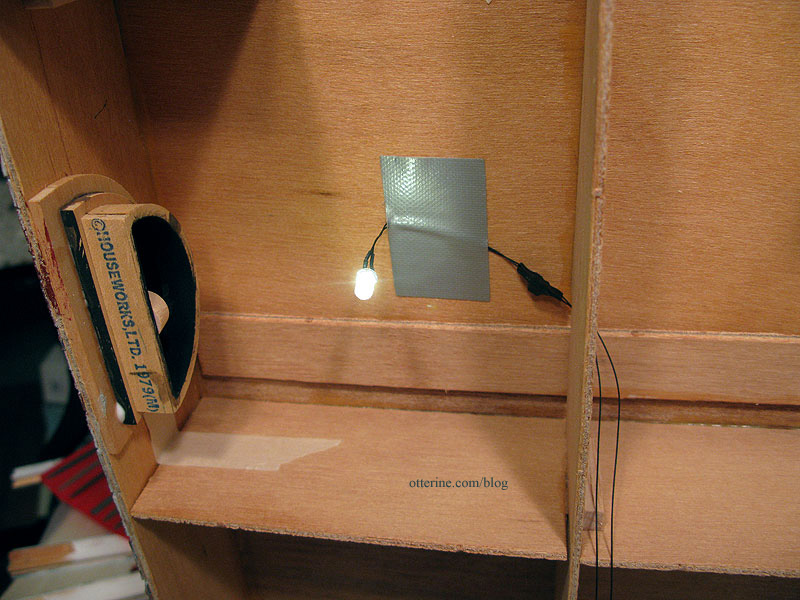
I found that an off-center placement worked best since the spindles on the window were blocking the light otherwise.
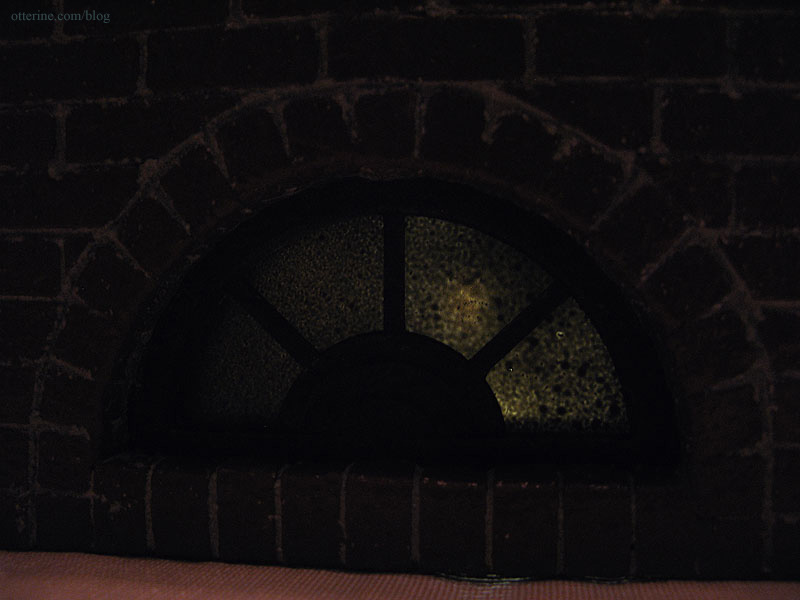
The light is not terribly bright with the thin layer of black paint on the windows, so I painted the “room” behind the window white.
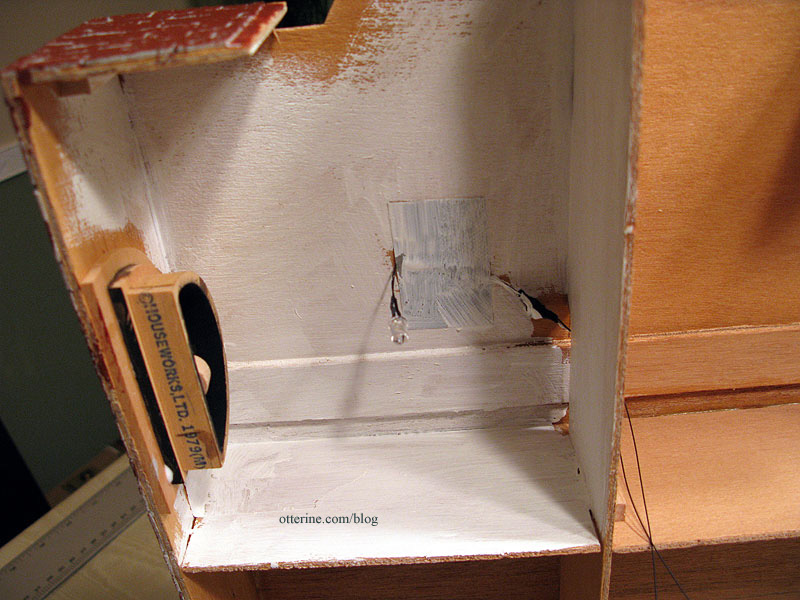
It reflected back just enough light to enhance the eerie green glow that works so well.
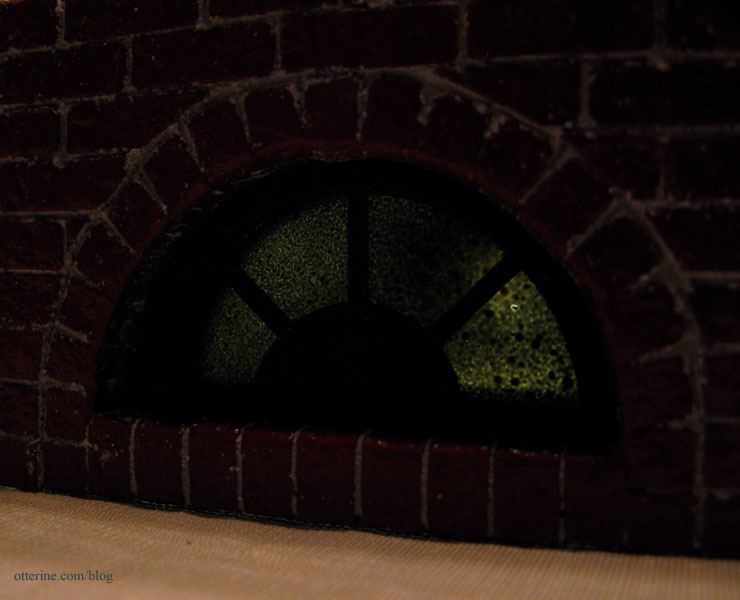
For the corner with two adjacent windows, I used one LED.
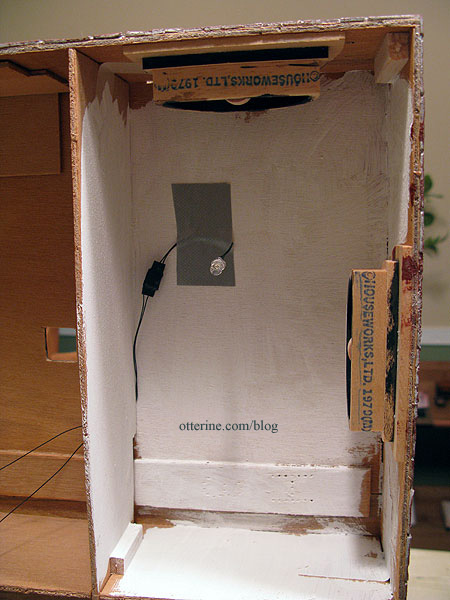
For one of the windows, I sprayed one side first with flat black paint and scraped away some of the paint after it dried. I then sprayed the other side to act as the outside. Now it looks as though someone has tried to see out from the cellar. :O
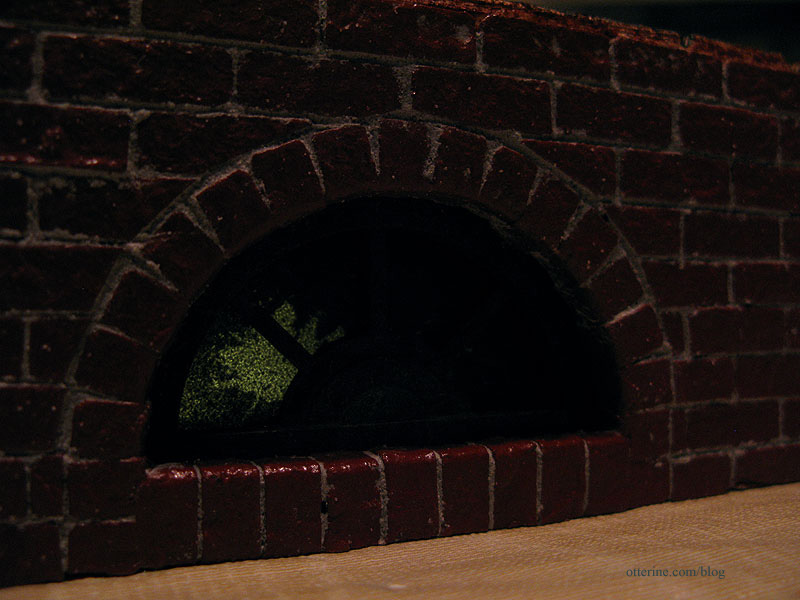
Since there is so much room in the foundation, I left all of the wiring here instead of running channels on the opposite side as I usually do. I ran the two sets of wires through existing openings under the foundation and spliced them together to work as one. These will have one plug that will operate both lights.
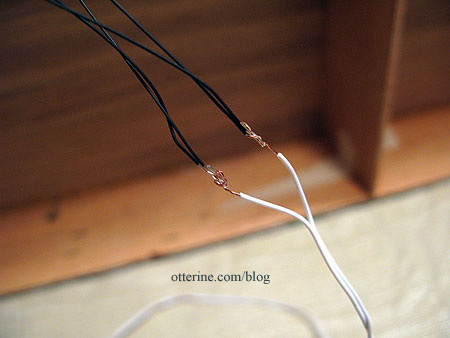
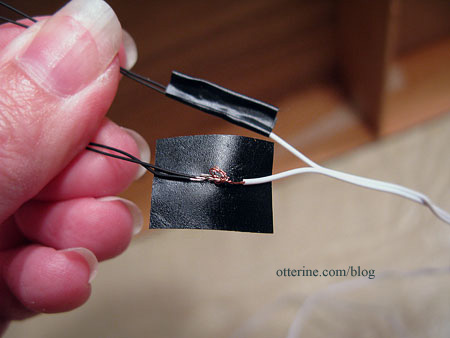
I taped all the wiring in place with duct tape to make sure it stays in place.
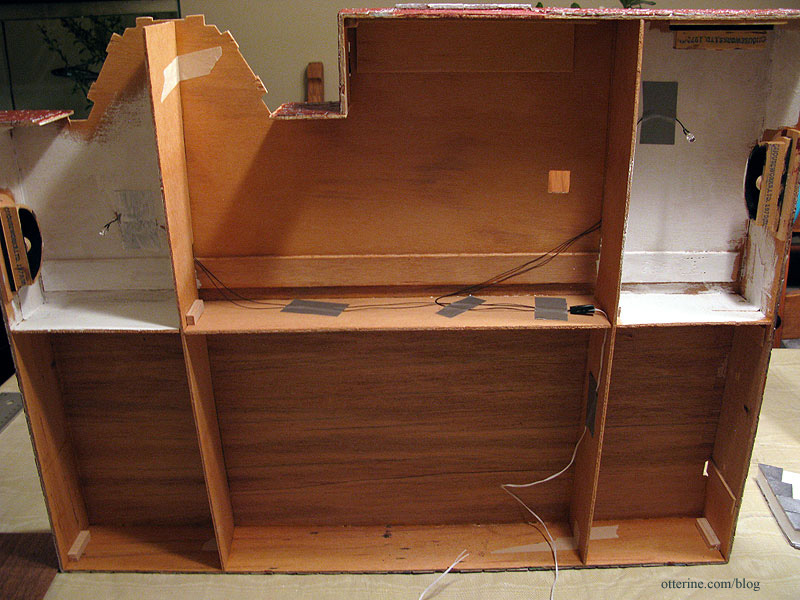
Categories: The Haunted Heritage
September 5, 2011 | 0 commentsHaunted Heritage red brick foundation
The bricks for my Heritage foundation are 1/4″ x 3/4″ except for the corner bricks, which measure 1″ in length. I also did a special treatment around the arch windows of the cellar, which I detailed earlier.
Once all of the bricks were in place, I dabbed on Liquitex Burnt Sienna. This is a thicker artist color acrylic, but it is a wonderful brick red color and has a great texture when stippled on with a stencil brush (two coats).
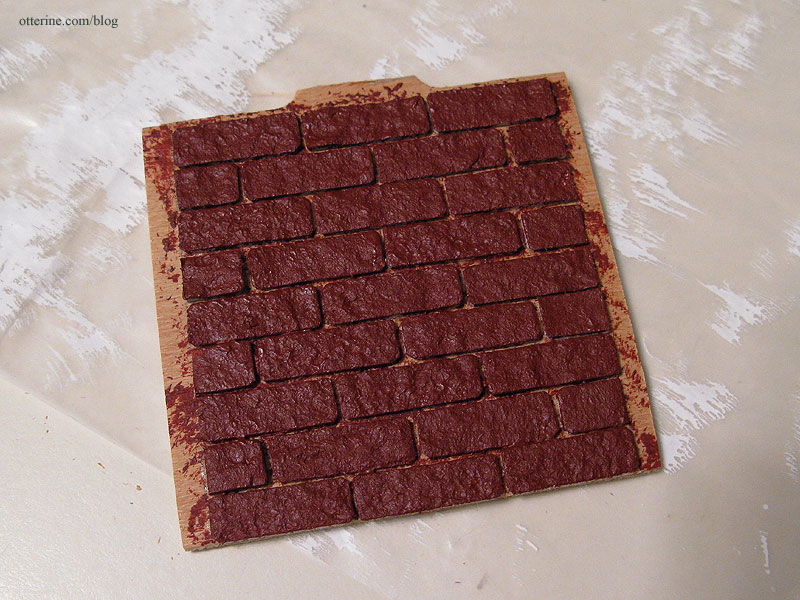
I let it dry overnight before grouting. I usually use Andi Mini Brick and Stone Mortar Mix for the grout since it has a good consistency and gives great results. If it gets thick, you can also soften with water.
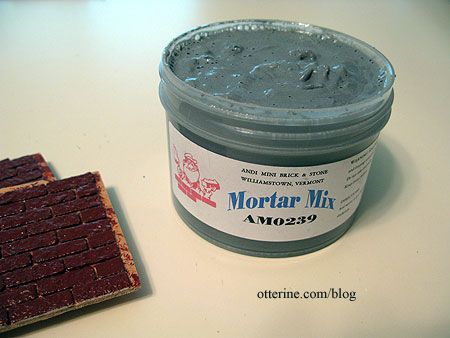
First, I spread on a little bit at a time with my fingers, pushing into the gaps between the bricks. I use my middle finger so I can apply with lesser pressure than I would with my index finger. The grout is abrasive and can mar the surface. Please forgive the blurry photos; I was trying to photograph with my left hand while working. :D
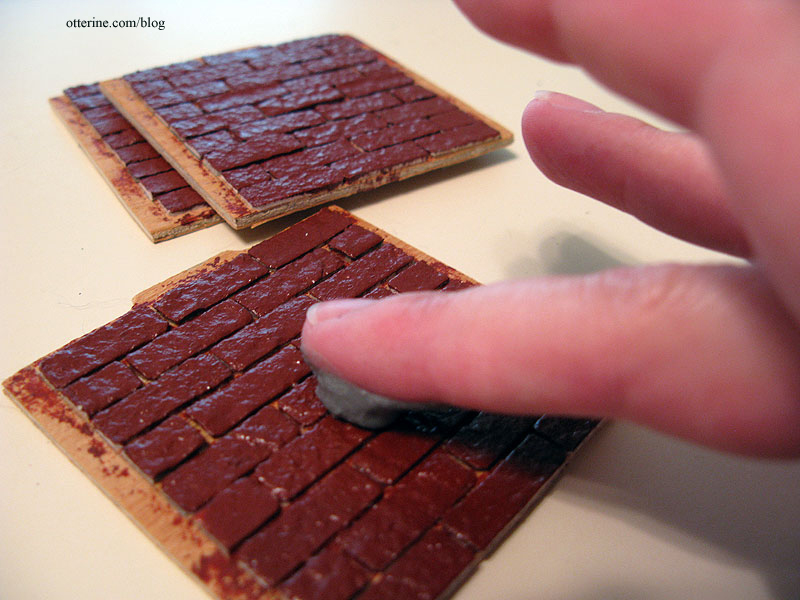
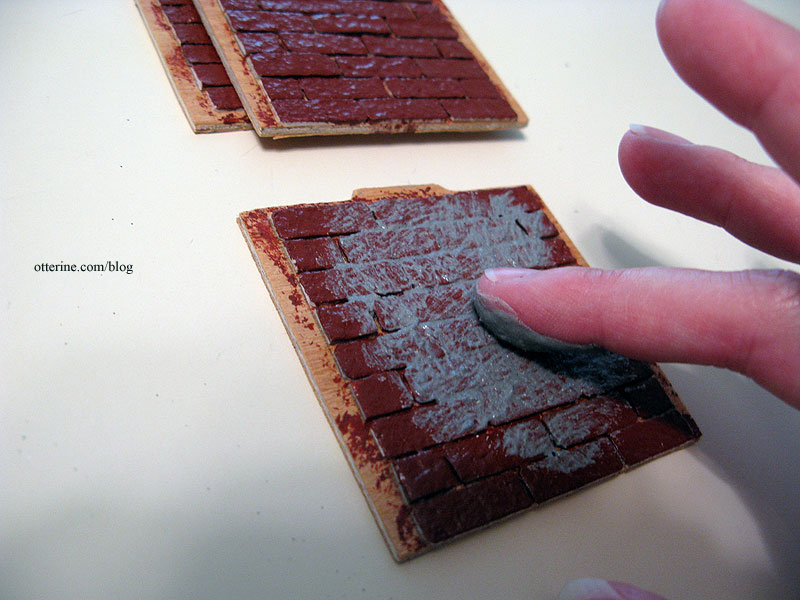
I try to keep the amount to just enough to fill the gaps without being too heavy on the surface. The more excess, the more you have to remove.
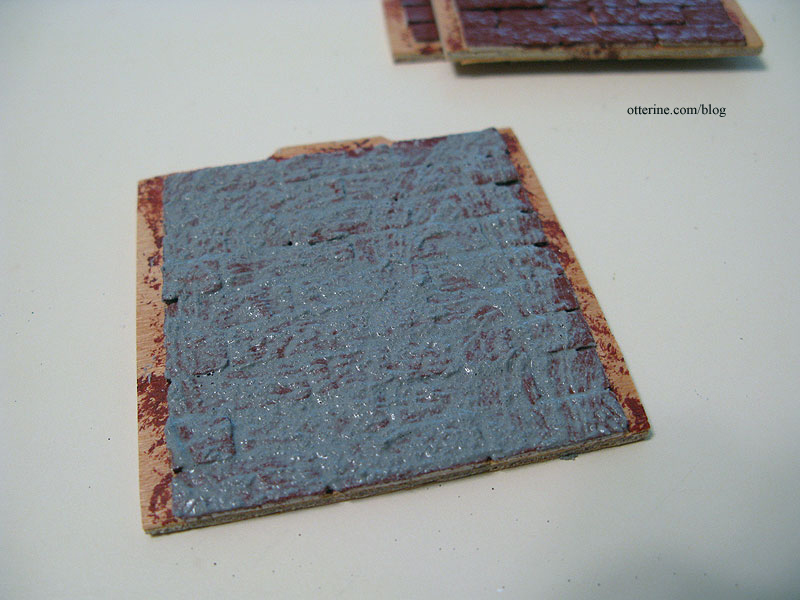
I do a section at a time and then take a wet towel and wipe away the excess. I do use a fair amount of water, which can lift some of the bricks and warp wood if I’m not careful. The key is to let the water do the work and not scrub the excess grout off. Doing so will lift not only the paint but in some places the entire paper surface of the egg carton bricks. This can be fixed, but why mess it up to begin with if you can avoid it? :D
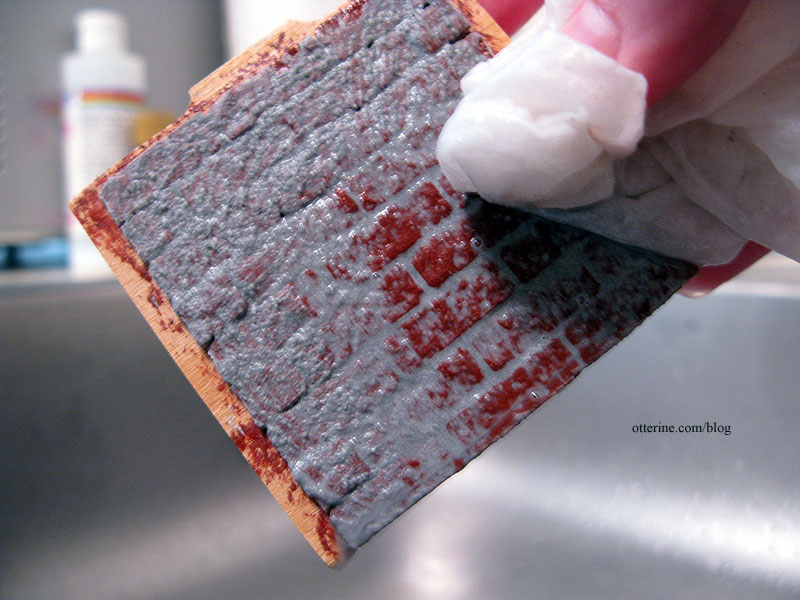
I leave some in the indentations of the bricks since I find it looks more realistic in the end.
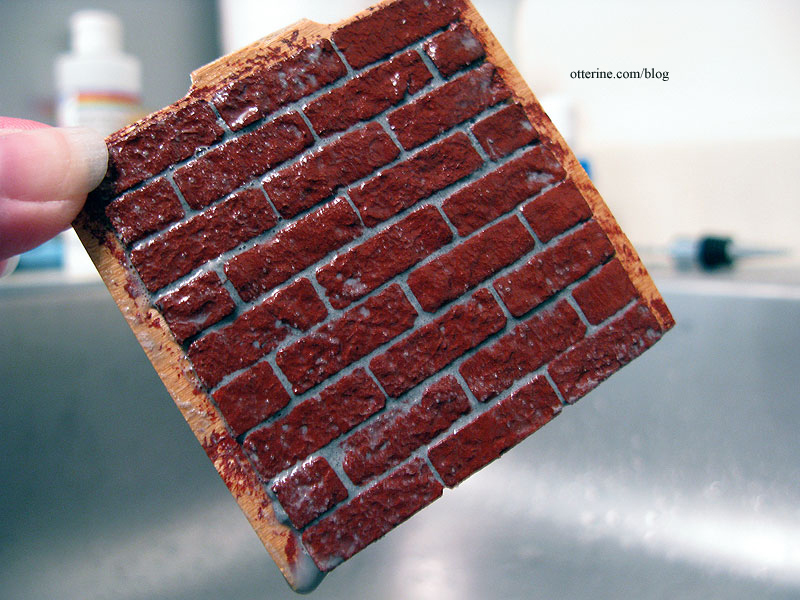
I then pat the bricks and surrounding wood dry.
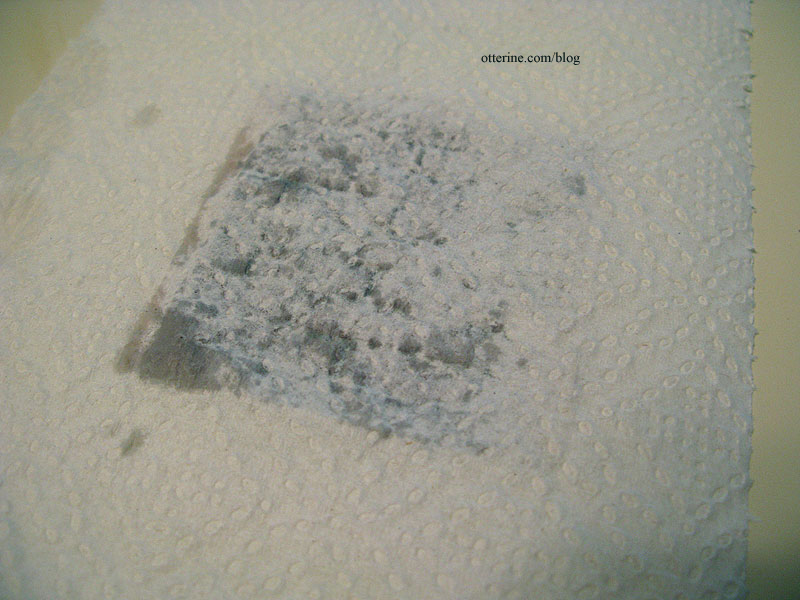
The next step is to pull a toothpick across the grout and then down each separation for a more realistic finish. Since I want to end up with a more weathered look, I did gouge out a few areas and wasn’t especially careful when tracing the lines.
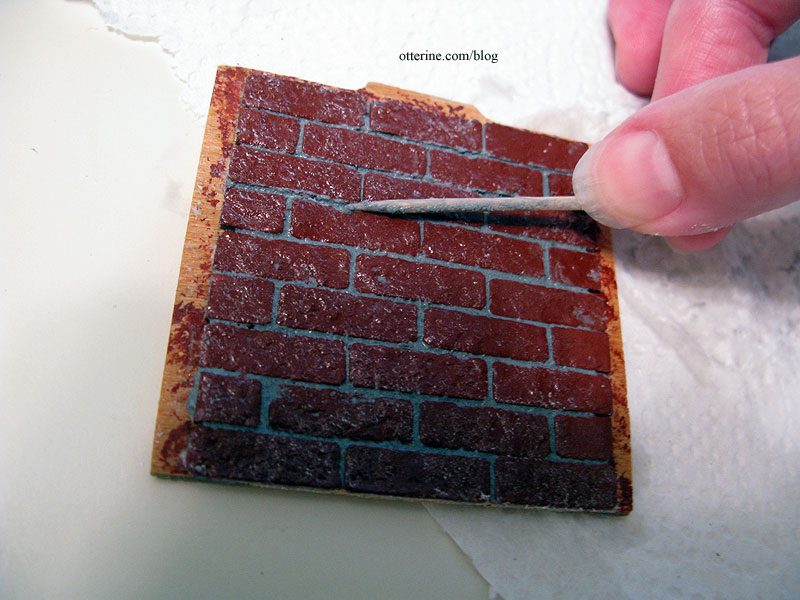
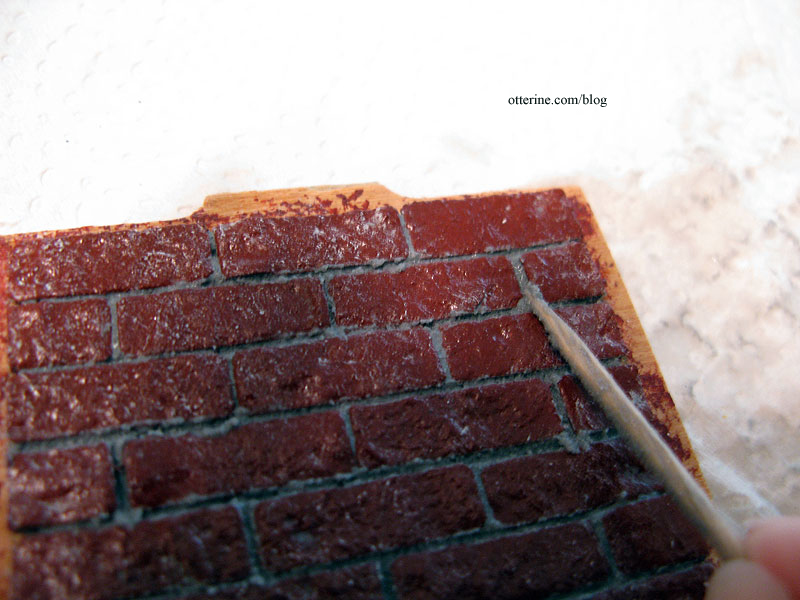
I sprayed on a light coat of matte sealer to finish and then let the whole thing dry. As it dries, the grout lightens a bit and any excess loose sand and dust can be brushed away. After drying completely, some bricks may need to be glued back down where they have lifted from the surface.
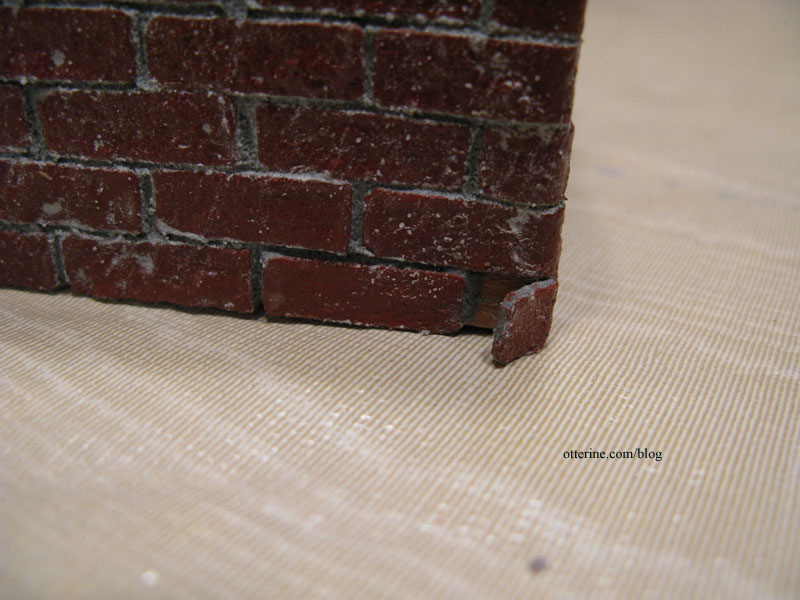
This is pretty shiny and new for my purposes, so I will age it more with paint and moss later on.
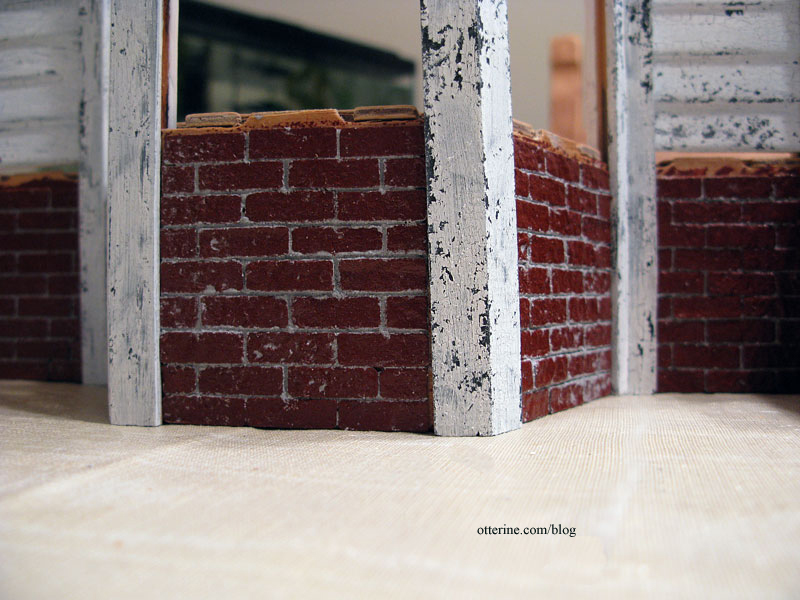
Update: see this post for the aging and moss application.
Categories: The Haunted Heritage
September 5, 2011 | 0 comments
NOTE: All content on otterine.com is copyrighted and may not be reproduced in part or in whole. It takes a lot of time and effort to write and photograph for my blog. Please ask permission before reproducing any of my content. Please click for copyright notice and Pinterest use.






































